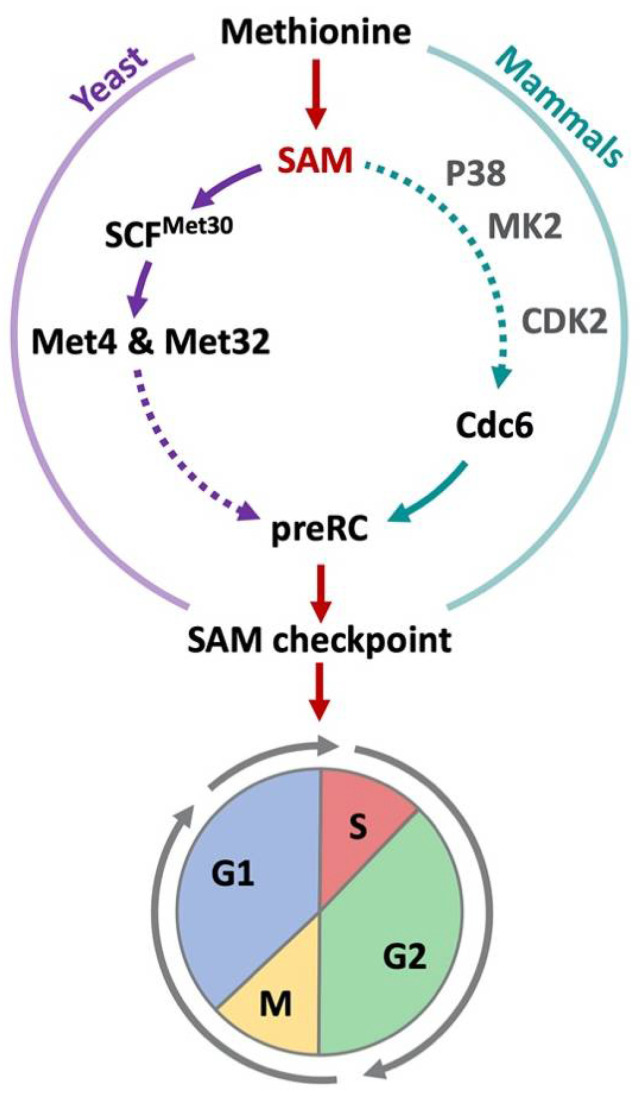Figure 5.
SAM-checkpoint in yeast and mammals. In yeast and mammalian cells, limiting methionine or SAM levels trigger a cell cycle arrest. In cancer cells, the arrest can also be induced when cells are shifted from methionine to homocysteine containing culture media (Hoffman effect). In both yeast and mammals, a destabilization of pre-replication complexes induces the SAM-checkpoint arrest. S-phase cannot be initiated and cells show an arrest in the G1-phase. Additionally, a delay in G2/M is observed. In yeast, sulfur containing metabolites are sensed by SCFMet30 and its substrates Met4 and Met32 coordinate methionine metabolism with proliferation. In mammalian cells, SAM is sensed by SAMTOR to regulate mTORC1 activity, yet its involvement in the SAM checkpoint is unlikely (see main text). However, p38, MK2, and Cdk2 have been suggested to play a role in the stability of pre-replication complexes. How this pathway receives information about methionine metabolism is however unknown.

